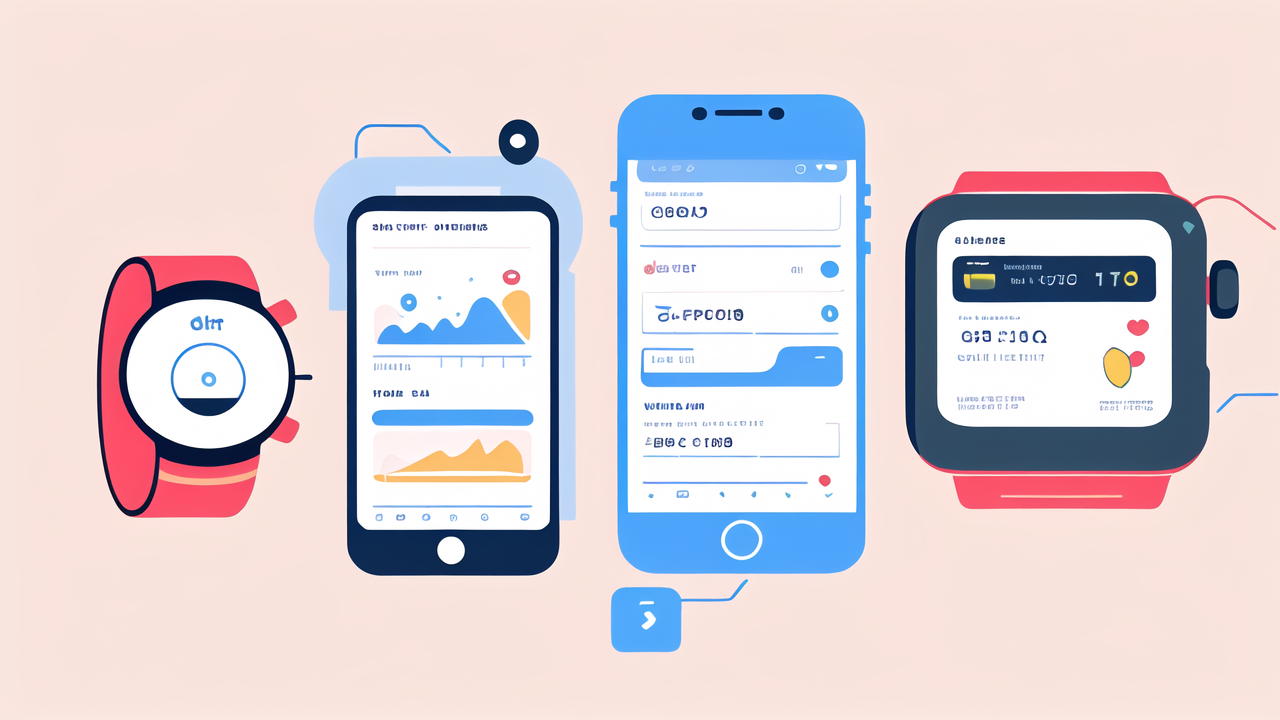The Evolution of Wearable Fitness Trackers in the United States
A Brief History of Wearable Fitness Technology
Wearable fitness tech has come a long way in the US. It all started with simple pedometers. These counted steps and not much else. Then came the first digital watches with heart rate monitors. They were bulky but groundbreaking. In the early 2000s, we saw the rise of GPS sports watches. These were game-changers for runners and cyclists. The real boom began with Fitbit in 2009. They made fitness tracking mainstream. Soon, smartphones joined the party. They added apps and sensors to track health data. This paved the way for today's smart wearables.

Innovations in Modern Wearable Fitness Gadgets
Today's wearables are a far cry from early pedometers. They pack advanced sensors in sleek designs. Many now track sleep patterns and stress levels. Some can even detect falls or irregular heartbeats. Smartwatches now offer ECG and blood oxygen monitoring. Fitness bands have become more accurate in counting steps and calories. Some wearables use AI to give personalized health advice. Others integrate with smart home devices for a seamless experience. The latest tech includes smart clothing with built-in sensors. These can track posture, muscle activity, and more. As tech advances, wearables are becoming more like personal health assistants.
The Impact of IoT on Fitness Wearables
The Internet of Things (IoT) has revolutionized fitness wearables. It allows devices to connect and share data. This creates a more holistic view of health and fitness. Wearables can now sync with smart scales and blood pressure monitors. They can also connect to gym equipment for better workout tracking. IoT enables real-time data sharing with healthcare providers. This can lead to better health outcomes and early detection of issues. Smart homes can adjust based on data from wearables. For example, lights might dim when your device detects you're tired. The IoT has made wearables more useful and integrated into daily life.
Key Features of Top Wearable Fitness Trackers
Advanced Metrics for Enhanced Fitness Analysis
Modern fitness trackers offer more than just step counts. They provide a wealth of advanced metrics. Heart rate variability (HRV) is now a common feature. It can indicate stress levels and recovery status. VO2 max estimates are available on many devices. This shows cardio fitness levels. Some trackers measure skin temperature for more accurate calorie burns. Sleep stage analysis has become more sophisticated. It can track light, deep, and REM sleep patterns. Advanced running metrics like cadence and stride length are now common. These help improve form and prevent injuries. Some devices even offer blood glucose monitoring for diabetics.

Integration with Smart Devices and Applications
Wearables now seamlessly integrate with other devices and apps. Most sync with smartphones for easy data viewing and analysis. Many work with popular fitness apps like Strava or MyFitnessPal. This allows for more comprehensive health tracking. Some can control smart home devices through voice commands. Music streaming services often integrate directly with wearables. This means no need for a phone during workouts. Payment systems like Apple Pay or Google Pay are common on smartwatches. Social features allow sharing of achievements with friends. Some wearables can even unlock your computer or car. This integration makes wearables more useful in daily life.
Battery Life and Design Considerations
Battery life is a key factor in wearable design. Most fitness trackers now last several days on a single charge. Some can go weeks, especially those with simple displays. Smartwatches typically need daily charging due to advanced features. Solar charging is emerging in some high-end devices. This can extend battery life significantly. Design-wise, wearables have become more stylish and comfortable. Many offer customizable bands and watch faces. Water resistance is now standard, with many suitable for swimming. Some designs focus on durability for outdoor enthusiasts. Others prioritize sleekness for everyday wear. The trend is towards devices that look good and perform well.
Regulatory and Ethical Implications of Wearable Fitness Devices
Understanding the Health and Wellness Data Protections
Health data from wearables is sensitive. It needs strong protection. In the US, HIPAA rules apply to some wearable data. But not all devices or apps are covered. Users should check privacy policies carefully. Many companies encrypt data during transfer and storage. Some offer options to delete or export personal data. Users should be aware of how their data is used and shared. Some companies may sell anonymized data to third parties. Others use it for research or to improve their products. It's important to know who has access to your health information. Regular software updates are crucial for maintaining security.

The Role of Regulatory Bodies in Fitness Wearable Technology
The FDA plays a key role in regulating some wearable tech. They focus on devices that make medical claims. For example, those that detect heart conditions. The FTC ensures companies don't make false advertising claims. They've taken action against some fitness tracker makers. The Consumer Product Safety Commission monitors for safety issues. They can recall products if needed. State-level bodies may also have oversight roles. As wearables become more advanced, regulations may need to evolve. There's ongoing debate about how to balance innovation and consumer protection. Regulatory bodies must keep pace with rapid technological changes.
Ethical Concerns in Wearable Fitness Tracking
Wearable fitness tech raises several ethical issues. Privacy is a major concern. Users may not fully understand how their data is used. There's potential for discrimination based on fitness data. Insurance companies might use it to adjust rates. Employers could make hiring decisions based on health metrics. The accuracy of data is another ethical issue. Inaccurate readings could lead to unnecessary anxiety or wrong decisions. There's also the question of data ownership. Who owns the data - the user or the company? Addiction to tracking is a growing concern. It can lead to obsessive behaviors around health and fitness. These ethical issues need ongoing discussion and careful consideration.




Leave a comment
This site is protected by hCaptcha and the hCaptcha Privacy Policy and Terms of Service apply.